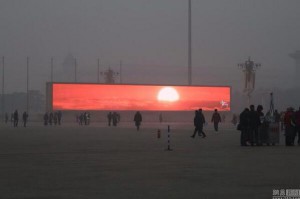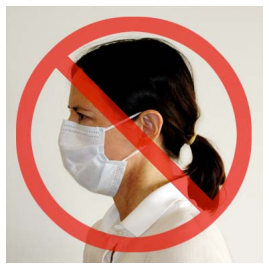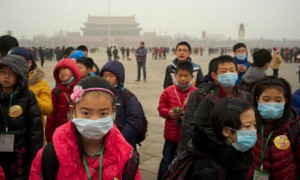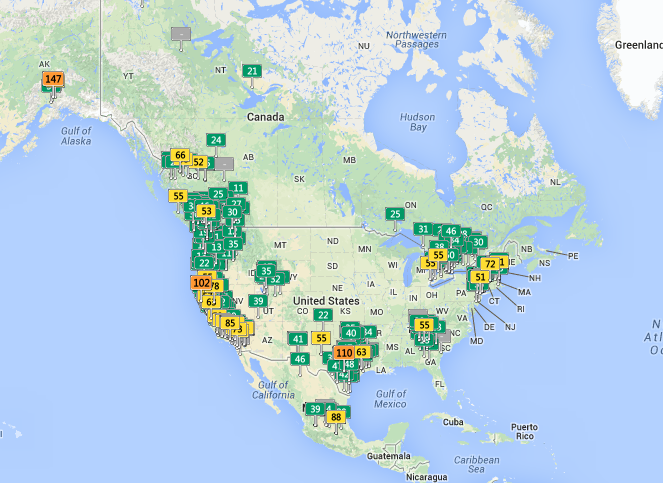People in Beijing and in as much as 15% of China are under a blanket of smog. The situation has gotten so bad that people are told to stay indoors with their air cleaners on. They don’t dare venture outside without a mask.
Particulate Matter
What’s going on? One of the components of smog is particulate matter (PM). PM is a combination of solids and liquids suspended in the air. Complex organic and inorganic compounds containing sulfate, nitrates, ammonia, sodium chloride, carbon, mineral dust and water make up this dangerous mixture. PM is defined by its size in μm (a unit of measure equal to one millionth of a meter), the fine particulates are called PM2.5 and PM10.
To get a grasp of these sizes, there are about 25,000 μm to 1 inch and a strand of hair is around 70 microns. Coarse particles are from 2.5 μm (microns) to 40 μm. Fine particles are from 10μm to 2.5 (PM10) and less than 2.5 μm (PM2.5) in size. PM10 can be inhaled and can penetrate the upper respiratory system defenses. PM2.5 can travel deep into lungs.
In 2005, the World Health Organization (WHO) put out guidelines for these particulates, specifically warning against daily exposure of PM2.5 above 25 μg/m3 and PM10 at 50 μg/m3. To give you an understanding of how bad the smog in China is right now, recordings of over 400 μg/m3 for PM2.5 have been the norm in Beijing.
Health Effects of Smog
 Recently a prospective study published in the Lancet described the effects of exposure to particulate matter in cities in Europe. Using statistics, the researchers calculated and determined that both PM2.5 and PM10 particulate matter had contributed to increased lung cancer incidence in Europe.
Recently a prospective study published in the Lancet described the effects of exposure to particulate matter in cities in Europe. Using statistics, the researchers calculated and determined that both PM2.5 and PM10 particulate matter had contributed to increased lung cancer incidence in Europe.
If that weren’t enough, Lancet published another meta-analysis of studies on air pollution. This study looked at daily exposure to particulate matter along with carbon dioxide, nitrogen dioxide and ozone. They found an association with increased hospitalizations for heart failure or mortality due to heart failure. Finally, exposure to air pollution has been associated with an increase in the number of low birth weight babies in Europe.
Smog travels
According to the Proceedings of the National Academy of Sciences, this pollution is tied to US manufacturers moving their factories to China, a country with far fewer environmental regulations than the US. Yet the smog in China is not staying in China. It travels and its impact is being felt in Japan and in the western US.
Use of Masks
 People in China are using masks to try to stay safe but dust masks and cotton masks that fit behind the ears are not protective from the smallest particle size (PM2.5).
People in China are using masks to try to stay safe but dust masks and cotton masks that fit behind the ears are not protective from the smallest particle size (PM2.5).
The type of masks that assure protection have had certification by the National Institutes of Safety and Health (NIOSH). N95 and P100 disposable particulate respirators are recommended and should fit tightly over the face. Because they do not fit, these masks are not recommended for children. 
What do you think?
Do you know about the quality of the air where you live? To see a real time air quality index visual map click here. 
Would you wear a mask if the air pollution where you live became dangerously high? What do you think of China’s traveling smog? Please share your thoughts in our comments section.





